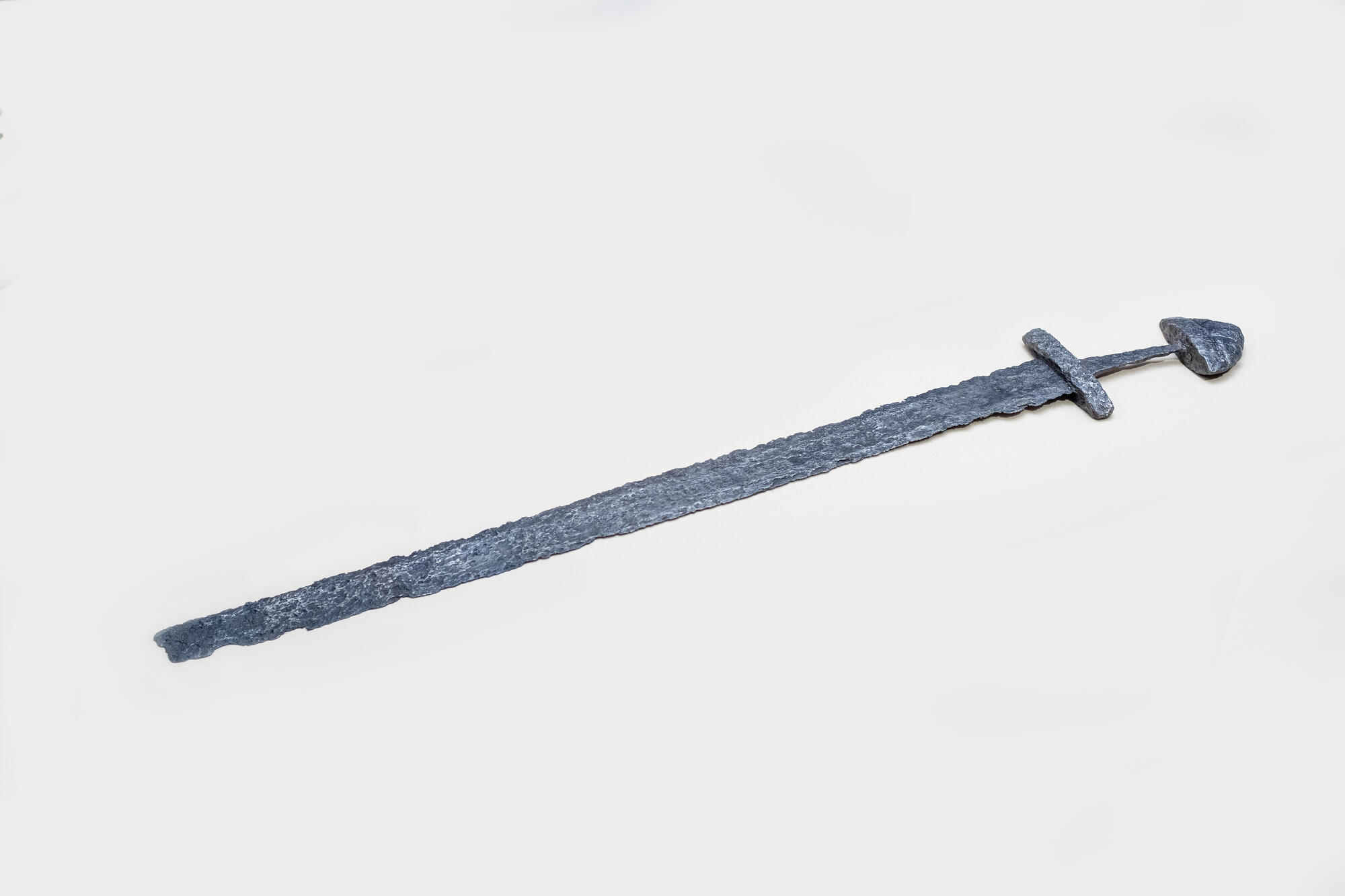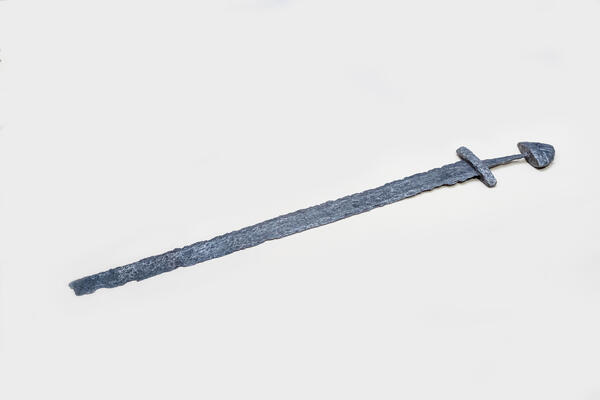This sword was accidentally discovered by a resident of the village of Shuya in 1997 at the base of a furnace in an old ruined house. The same year, the weapon was donated to the museum, where it is now displayed in the permanent exhibition section “Northern Borderlands. Karelia in the Middle Ages”. The sword was restored by the museum staff and specialists from the Grabar All-Russian Art Scientific Restoration Center in Moscow.
Archaeologists found similar objects during the expeditions to Prionezhsky District. The finds are about a thousand years old. This allowed scientists to conclude that in the Viking era, warrior tribes not only inhabited the territory of the Southeastern Ladoga area but also traveled much farther north, to the western coast of Lake Onega.
The sword was classified as a weapon of the “Rhine” type, which was named after the technology of the Rhine armorers, whose products were often found at the end of the first millennium AD throughout Europe — including the settlements on the shores of the Baltic Sea. During this period, the Eastern Slavs continued their movement to the north. The paths to rich southern towns and markets were open for the Scandinavians from the shores of Lake Ladoga. In the Viking Age — from the 9th up to 11th centuries — the state of the Slavs, Scandinavians, and Finno-Ugric tribes emerged. In the “Tale of Bygone Years” it is mentioned as a principality, which was headed by a Varangian chieftain Rurik, with the capital in Ladoga, and then in Novgorod.
In those years, the sword was considered an elite weapon. Its weight did not exceed 1.5 kilograms and it was 70 centimeters long. The blade was double-edged, sharpened on both sides. Such swords were an attribute of both wealthy warriors and rich merchants.
In Old Rus, the sword was the usual weapon of the prince’s army, in contrast to the militia — they were armed only in case of war. The epic poem “Kalevala” that was based on ancient Karelian runes and legends mentioned the sword as a symbol of a man’s valor. About a dozen swords from the early Middle Ages were found in Karelia, but all of them were broken or bent. This is connected to the funeral rituals common at that time. Researchers have put forward several theories why the weapon was broken before being placed next to the deceased. According to one theory, the act of breaking set the soul of the sword free. On the other hand, the sword was broken to make sure that the deceased could not harm the living. The sword in the Arkhangelsk exhibition is the only one among the finds that has remained intact since it was not found in a burial.
Archaeologists found similar objects during the expeditions to Prionezhsky District. The finds are about a thousand years old. This allowed scientists to conclude that in the Viking era, warrior tribes not only inhabited the territory of the Southeastern Ladoga area but also traveled much farther north, to the western coast of Lake Onega.
The sword was classified as a weapon of the “Rhine” type, which was named after the technology of the Rhine armorers, whose products were often found at the end of the first millennium AD throughout Europe — including the settlements on the shores of the Baltic Sea. During this period, the Eastern Slavs continued their movement to the north. The paths to rich southern towns and markets were open for the Scandinavians from the shores of Lake Ladoga. In the Viking Age — from the 9th up to 11th centuries — the state of the Slavs, Scandinavians, and Finno-Ugric tribes emerged. In the “Tale of Bygone Years” it is mentioned as a principality, which was headed by a Varangian chieftain Rurik, with the capital in Ladoga, and then in Novgorod.
In those years, the sword was considered an elite weapon. Its weight did not exceed 1.5 kilograms and it was 70 centimeters long. The blade was double-edged, sharpened on both sides. Such swords were an attribute of both wealthy warriors and rich merchants.
In Old Rus, the sword was the usual weapon of the prince’s army, in contrast to the militia — they were armed only in case of war. The epic poem “Kalevala” that was based on ancient Karelian runes and legends mentioned the sword as a symbol of a man’s valor. About a dozen swords from the early Middle Ages were found in Karelia, but all of them were broken or bent. This is connected to the funeral rituals common at that time. Researchers have put forward several theories why the weapon was broken before being placed next to the deceased. According to one theory, the act of breaking set the soul of the sword free. On the other hand, the sword was broken to make sure that the deceased could not harm the living. The sword in the Arkhangelsk exhibition is the only one among the finds that has remained intact since it was not found in a burial.



